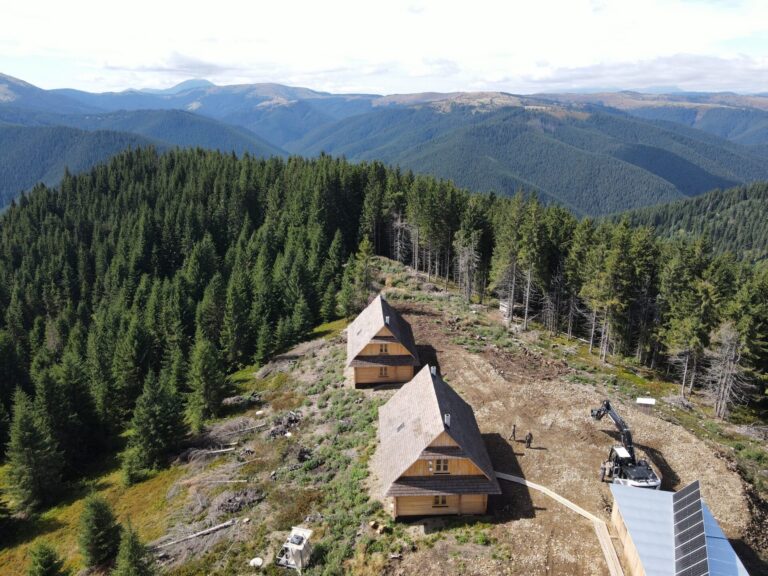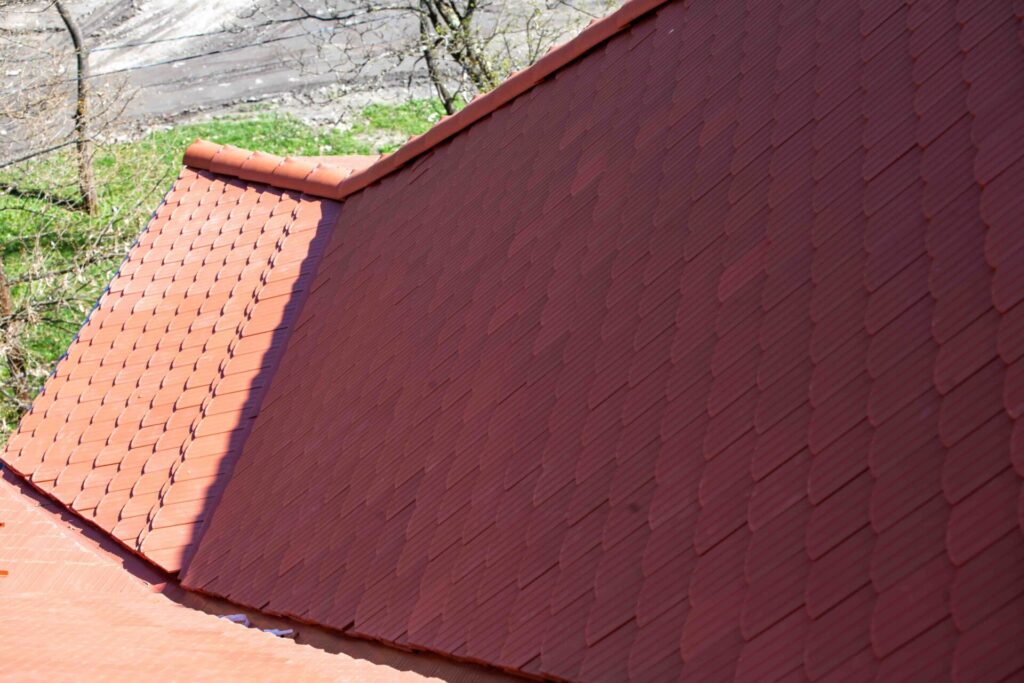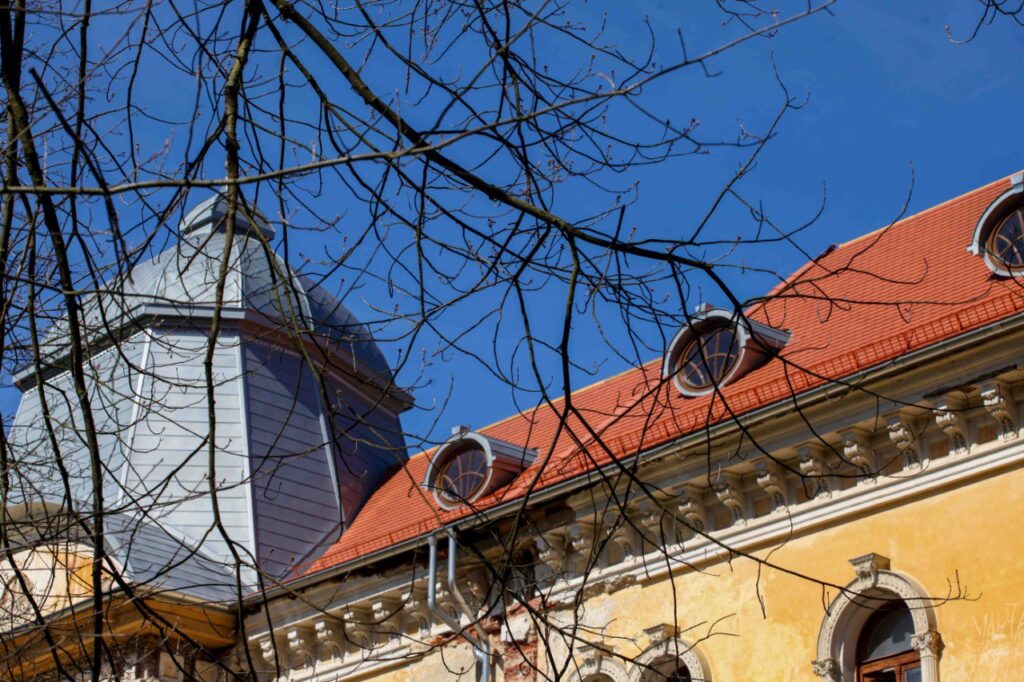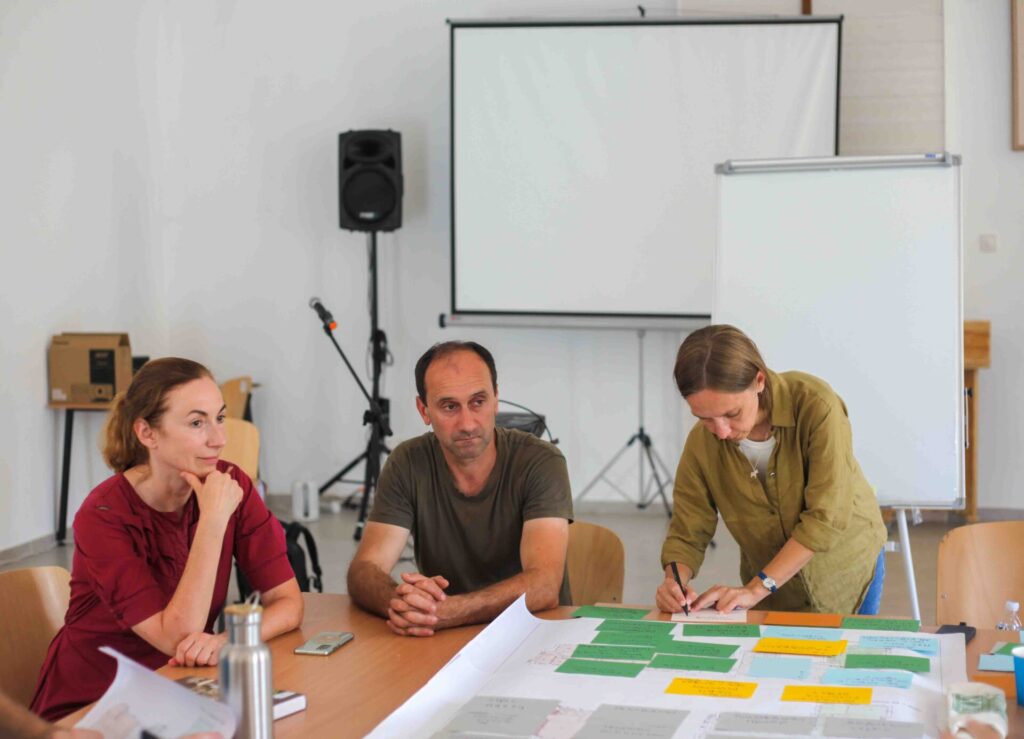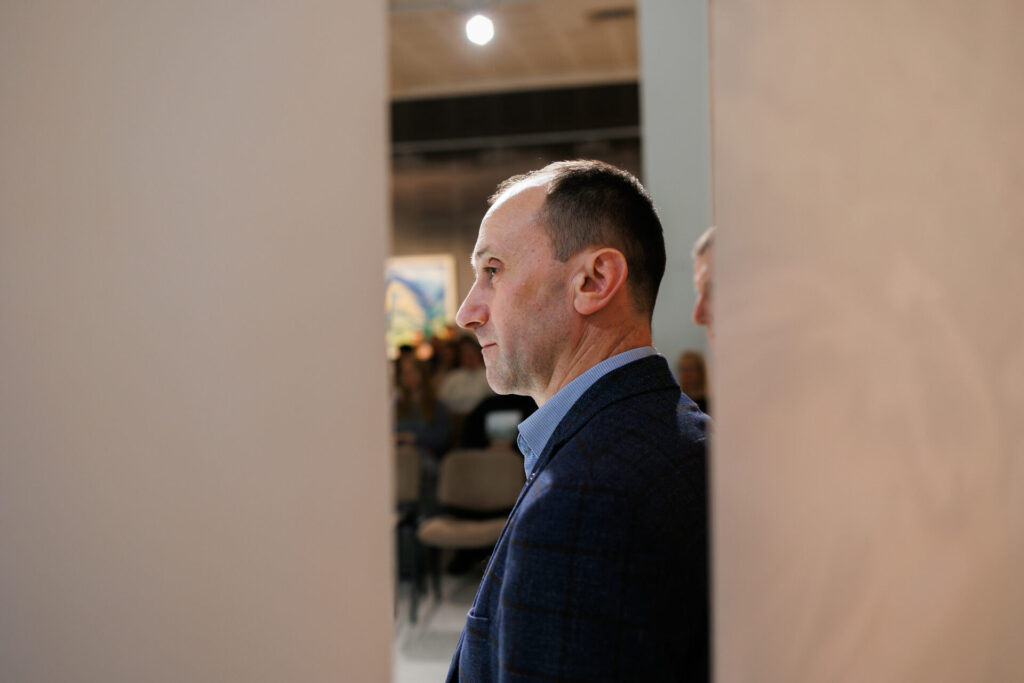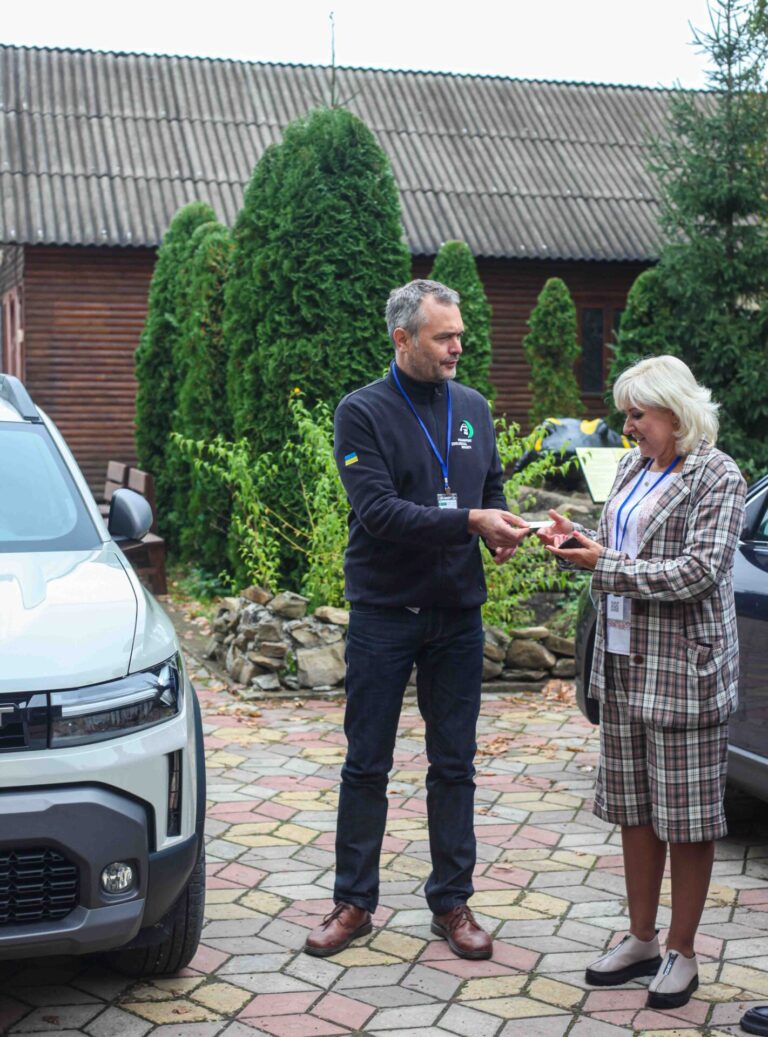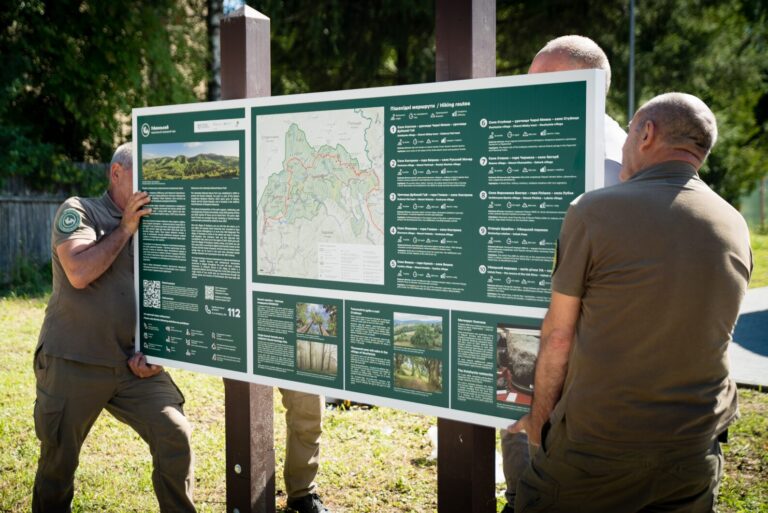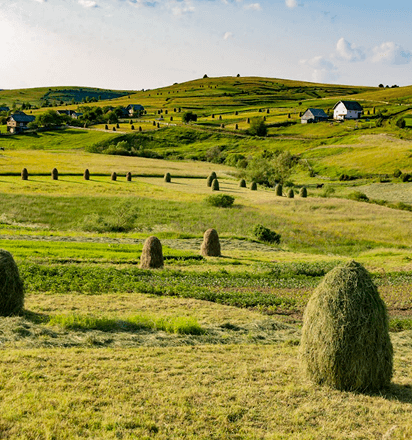New Life for Old Walls: Revitalizing the Gredel Palace in Skole
In 2024, the Frankfurt Zoological Society, with funding from private donors, financed the restoration of the roof of the Gredel Palace in Skole. A concept for the building’s future use has already been developed, and an architect has been approved. In spring 2025, the research phase within the palace is set to begin.
The Gredel Barons’ Palace in Skole is a local architectural heritage site. The building is leased by the Skolivski Beskydy National Nature Park from the Skole City Council.
The palace was founded in the mid-19th century. In 1886, it was acquired by the Gredel family—industrial entrepreneurs who expanded their timber empire across the Carpathian forests. During the Soviet occupation, the building housed an The People’s Commissariat for Internal Affairs department and later became a boarding school. At the onset of Russia’s full-scale invasion of Ukraine, the palace served as a shelter for people fleeing the most heavily affected regions.
Iryna Burbilo, Project Coordinator for Construction and Renovation, FZS Ukraine:
The Frankfurt Zoological Society (FZS) has been working with the Skolivski Beskydy National Nature Park for nearly a decade. Over this time, a strong and trusted partnership has formed between the two organizations. So when an urgent need arose—to provide decent living conditions for internally displaced persons temporarily housed in the palace—the decision to allocate donor funding for the building’s renovation was made without delay.
As the roof restoration began, the idea of revitalizing the palace started to take shape. Once this idea became more defined, the palace’s potential emerged—not only as a space for the park but also as a resource for the wider community. This potential is not yet fully understood and will only be revealed in full after completing architectural and historical-bibliographical research.
To protect the building from further deterioration, in 2024 the Frankfurt Zoological Society, with support from private donors, funded the first and most urgent conservation work—the restoration of the palace roof. Now that the structure is protected from the elements, we are working together with the national park and the local community to find a meaningful new use for the building. This process relies heavily on the cooperation of all three parties: the park, FZS, and the Skole community.
The Gredel Palace is a large two-story building with a total area of over 2,500 m². Therefore, it is important to carefully plan which functions and spaces will be located alongside the national park office inside the building. In 2024, a series of stakeholder meetings and consultations with architectural heritage experts were held. As a result, a concept for the palace was developed — a guiding document that now informs our planning for its future use. The project’s lead architect has already been appointed. She will oversee upcoming research and prepare the palace’s restoration project. In 2025, we plan to conduct historical, bibliographic, and architectural studies and develop a preliminary design.
After the research phase, we will better understand which elements must be preserved and which parts of the interior lack historical value and can be adapted for new uses. We will also identify the competencies within each partner team and determine where expertise is still needed — because we aim to build a dedicated team that will continue working with the palace in the long term.
The Park and the Community. Vasyl Pryndak
Vasyl Pryndak is the director of the Skolivski Beskydy National Nature Park. He represents the park in the process of revitalizing the Gredel Palace.
At the stage when the palace was transferred for lease, the main goal was to use the building as an administrative facility for the park’s needs. However, from the very beginning, it was clear that this heritage site has much greater potential. The spacious and visually appealing palace could become an environmental education center, a community visitor center, a venue for events and exhibitions, and a platform for partnerships with international conservation organizations.
Currently, preparations are underway for research, which will form the basis for the development of design and cost documentation for the palace’s restoration. At the same time, efforts are being made to secure funding and partners for the project’s implementation. In the future, the Gredel Palace is envisioned as a tourism and communications hub — not only for Skole, but for the entire region.
In 2019, the community had several options for leasing the palace, but chose the national park as the institution capable of preserving the monument and ensuring its functionality for the benefit of the local community and tourism development. Together with the residents, the park is implementing a number of initiatives, including the development of inclusive recreation areas, and holds regular meetings to discuss the functional content of the palace.
About 20,000 hectares of the nature reserve fund, which is part of the park’s territory, are located within the Skole community. Therefore, Vasyl Pryndak emphasizes, it would be wrong to ignore the interests of the residents, and thus the community is involved in all key stages, including the formation of a vision for the future of the palace. For the space to function efficiently, it is important that the community receives not only a finished result, but also a resource with which it can work further:
FZS has taken on an important role as a facilitator of the process: between the community and the park, between the park and the donor, between the donor and the community. Facilitation is important to understand what we want, where we are going, and to manage these processes. FZS presents it well, and I hope that with this facilitator we will be able to find funds for the restoration.
During the research phase, we will have a dialog with residents about the history of the palace. It will be interesting to hear memories of the Gredel family. For example, villagers still remember the handkerchiefs that their manufactory made. Such conversations not only give the project a new meaning, but also help to intensify internal communication in the community around heritage.
The city government also supports the tourism development of the region. In particular, one of their initiatives is to preserve authentic tiled roofs that are clearly visible from the entrance to the city. This demonstrates the growing attention to local heritage and awareness of its tourist appeal. The community’s priority is sustainable tourism, focused on getting to know the region better and making visitors stay longer.
Building a Team and Shaping the Space. Mariia Kravchenko
Mariia Kravchenko is a cultural manager working on heritage-related projects. Currently, her focus is to help the team find the best path toward the revitalization of the palace. The Hredel Palace is a large site involving many stakeholders, so discussing possibilities, identifying potential risks, and structuring the stages and direction of the work helps clarify their interests and determine how to engage them in joint efforts. After developing a basic concept, conversations continue with everyone who might contribute to its implementation.
The Hredel Palace is a unique location in that it unites both environmental and historical-cultural dimensions. For heritage professionals, the deep history of the site — including its dendrological features — is a discovery, while for conservationists, the architectural charm of the palace and the insights into the Gredel family’s business practices are equally fascinating. Combined with the stories local residents remember about the Gredels, this creates a rich and valuable mosaic. No matter the background a person comes from, they’ll discover a new facet they hadn’t known before. The constant, central element of the building remains the park’s office — and additional features will grow around it.
- The park office has the potential to become a networking hub for Ukrainian conservationists and a center for national parks across Ukraine.
- To strengthen the conservation component, the palace is envisioned as a space for environmental education initiatives— including educational programs for children and a school for nature-based forestry, which would serve as an institution for advancing expertise in this field. Such a center could quickly adapt its training to emerging challenges in the sector (for example, those resulting from the full-scale russian invasion).
- The palace is important both for conservation efforts and for preserving cultural heritage. This duality could be highlighted through cross-sectoral programs—such as research residencies that culminate in public exhibitions. Accordingly, the palace should include spaces for residencies, workshops, training sessions, and potentially guest accommodations.
- The location of this heritage site provides an opportunity to draw attention to the natural landscapes of the national park and the history of the Hredel family. This makes it a promising site for a tourist information center, a café, or a restaurant.
- It is also important to showcase the historical perspective—how the palace has changed architecturally over time, the story of the Hredel barons, the history of the local community, and possibly of the Carpathians more broadly. This historical narrative could take the form of a museum or be integrated into various parts of the building.
The palace lies along a major route, and its diverse programming will encourage visitors to stay longer in the community—one day to see an exhibition, the next to attend a talk, and another to walk an eco-trail in the national park. In partnership with the park and the local community, it is possible to create programs for longer tourist stays and foster responsible tourism.
At this stage of revitalization, Maria emphasizes, we’re still speaking of potential directions. In 3–5 years, the palace’s use may evolve. That’s why it’s important to take a holistic view of programming and explore how cultural heritage and conservation efforts can reinforce one another.
The local community must be part of these conversations from the start, as the palace will serve them too—and potentially provide jobs. The project will require a large, diverse team with a wide range of skills: implementers, contractors, and experts.
“This is definitely an orchestral story,” says Maria. “Everyone has their part, and if it’s lost, the melody suffers. But if everyone plays in harmony, it becomes a beautiful symphony.”
There are still many unanswered questions. But that, Maria says, creates space for dreaming: ideas emerge and adjust to reality—step by step.
Researching to Restore. Pavlo Bohaichyk
Pavlo Bohaichyk is the expert coordinating the restoration process. Now that the roof has been repaired and the building is protected from further decay, the project is entering the research phase—an essential foundation for making the right restoration decisions. Soon, architectural and historical-bibliographic research will begin.
Architectural research is mandatory in the restoration of cultural heritage sites. In this case, it will offer insight into the palace’s construction phases and help select appropriate restoration materials. This phase will examine plasterwork, architectural details, and decorative elements. Once the structure’s historical evolution is understood and the valuable elements identified, the research will guide how to restore the building accordingly:
There is always the chance of uncovering hidden treasures: decorative paintings or historic details buried under Soviet-era paint, for instance.
Historical and bibliographic research is crucial for shaping the future vision of the palace. Work with archival materials will provide a detailed historical background of the site, the period of the town’s development during its construction, and the Hredel family’s role in the community.
The research results will inform how the palace can be functionally repurposed, how it can be adapted to the existing concept, and how new functions and spaces can be integrated.The materials gathered during this phase will serve as the foundation for future educational programs, tourism experiences, and learning tours—enhancing the palace’s value as a cultural destination.
The research is expected to take approximately six months and will begin in spring 2025. Once it’s completed, work will begin on developing the scientific restoration project.
For the Frankfurt Zoological Society (FZS), this project is a special one. It extends beyond the organization’s traditional scope but powerfully demonstrates the importance of protected areas—not only as natural refuges, but also as spaces for community development, cultural continuity, and new meaning. FZS initiated the revitalization of Hredel Palace and now coordinates the involvement of new experts and partners. This historic space has the potential to become a place where local stories and global challenges intersect and give rise to something entirely new.
News
